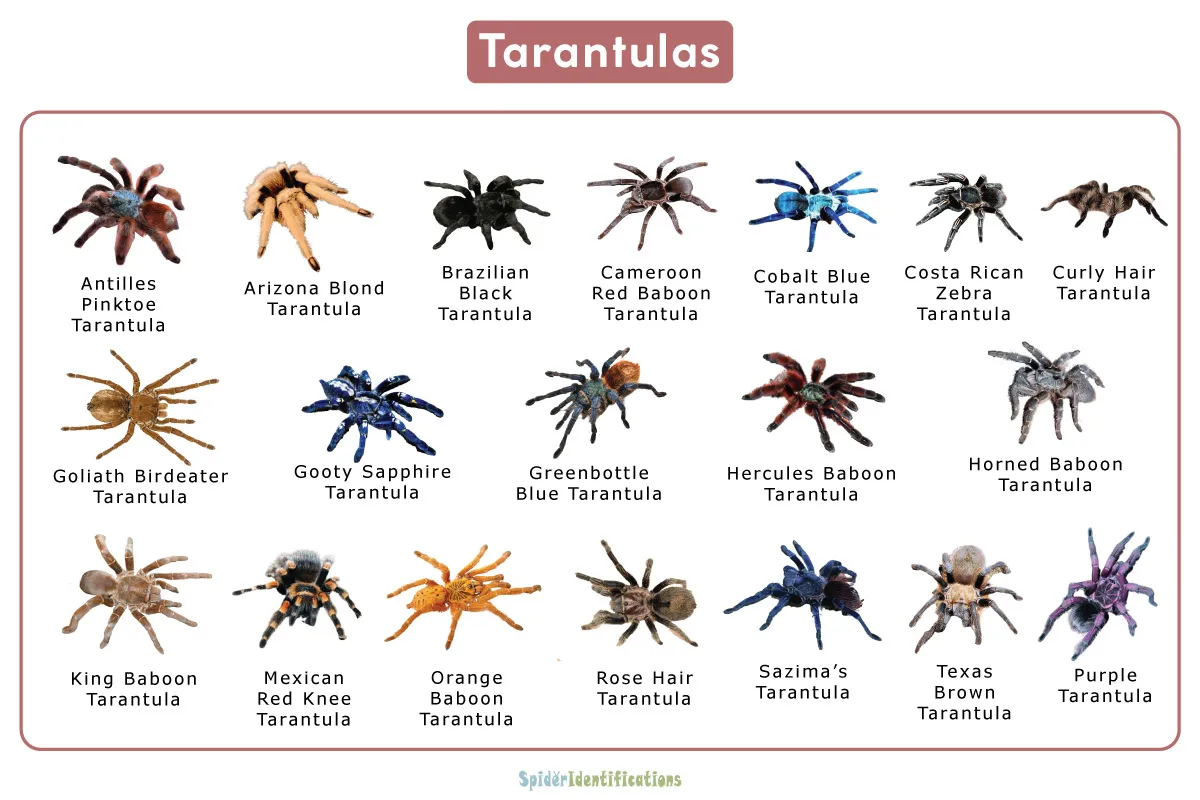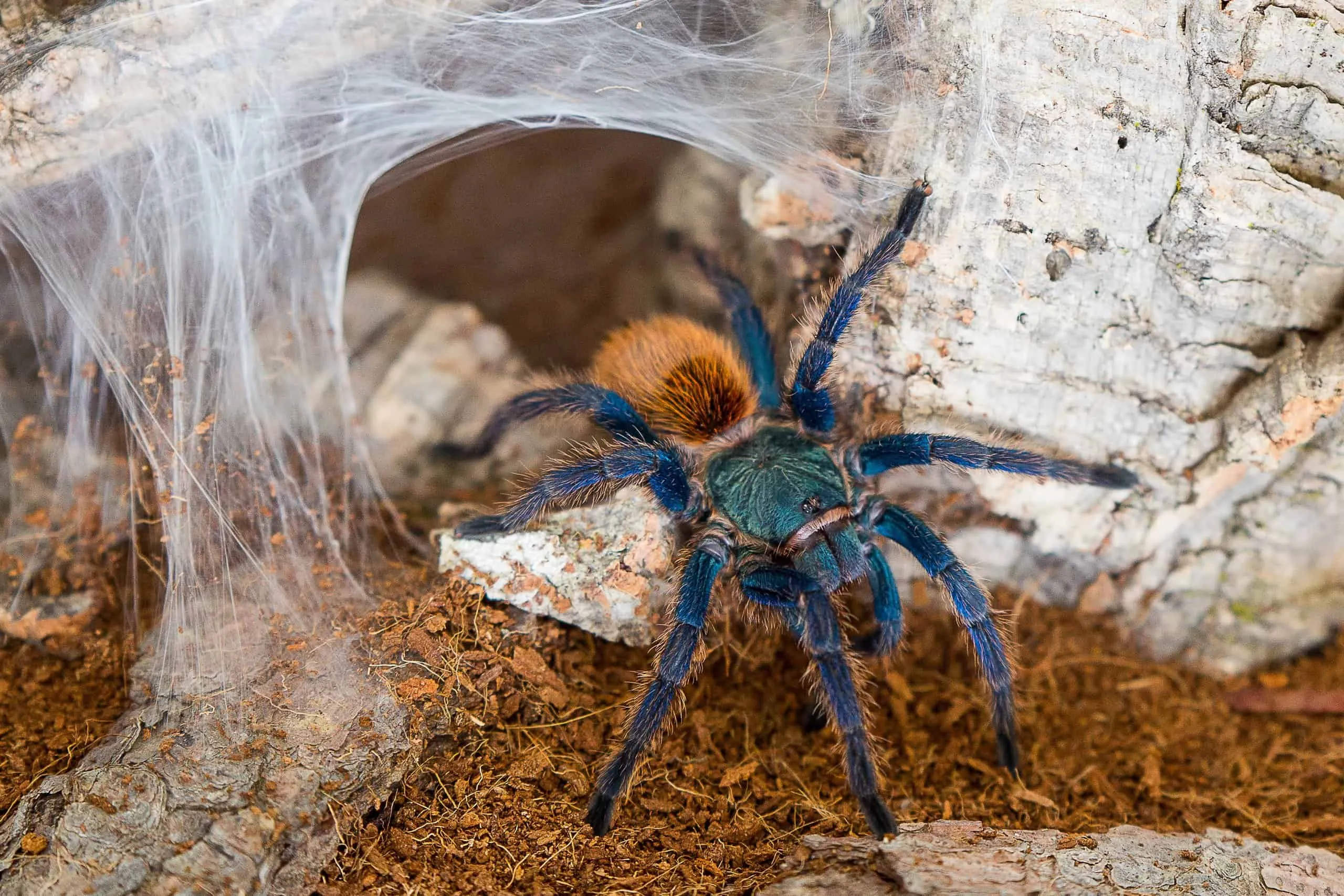Understanding Tarantula Species Diversity
Tarantulas, with their impressive size and captivating appearance, represent a diverse group of spiders found across the globe. Understanding the sheer variety of tarantula species is the first step in accurate identification. Thousands of species exist, each with unique characteristics. These spiders are not just categorized by their physical attributes but also by their behavior, habitat preferences, and geographic distribution. The diversity makes identifying tarantulas a fascinating challenge, requiring a keen eye and access to reliable resources. Identifying the correct species is also crucial for responsible pet ownership and conservation efforts, since different species have very different needs and conservation statuses.
Physical Characteristics to Observe
Several physical traits can help distinguish between tarantula species. Paying close attention to these details is essential for narrowing down the possibilities. The size, shape, coloration, and patterns of the spider can all provide valuable clues. It’s also important to consider the overall body structure, including the proportions of the cephalothorax (the combined head and chest) and the abdomen. Using a magnifying glass will help identify finer details. Careful observation and comparison with known species are key to an accurate identification, and should be done with utmost care not to hurt the spider.
Body Size and Shape

The overall size and shape of a tarantula can provide useful information about its species. Tarantulas vary significantly in size, from smaller species with body lengths under an inch to larger ones with bodies exceeding three inches. Note the overall proportions: is the spider more elongated or more compact? The shape of the cephalothorax, the part of the body to which the legs are attached, also varies between species. Some have a more rounded cephalothorax, while others have a more flattened or angular appearance. These characteristics, combined with other features, can help narrow down the possibilities.
Leg Span Measurement
Leg span, the distance between the tips of the legs when fully extended, is a crucial measurement for tarantula identification. Leg spans can range from a few inches to over 10 inches, depending on the species. When measuring leg span, ensure the spider is in a relaxed position. Use a ruler or calipers to obtain an accurate measurement. Comparing the leg span to the body size can also provide valuable insights, as different species have varying leg-to-body ratios. However, be cautious; this measurement alone is rarely sufficient for definitive identification, but it provides a useful data point.
Coloration and Patterns
Coloration and patterns are perhaps the most visually striking features used in tarantula identification. Tarantulas display a wide array of colors, from earthy browns and blacks to vibrant blues, oranges, and yellows. The patterns on the carapace (the top of the cephalothorax), abdomen, and legs are often distinctive for certain species. Some tarantulas have intricate markings, while others have more uniform coloration. The presence or absence of specific patterns, such as stripes, spots, or bands, can be a critical identifying factor. Referencing photos of known species and comparing them to the spider in question can be very helpful.
Identifying Sex of Tarantula

Determining the sex of a tarantula is another essential aspect of identification, as males and females often differ in appearance and behavior. Accurate sexing can provide additional information. There are few reliable external features to determine sex, but they can be observed without any special equipment. These differences become more apparent as the tarantula matures. Several methods can be used, and they often require a close examination of the spider’s physical attributes.
Examination of Pedipalps
In mature male tarantulas, the pedipalps (small leg-like appendages near the mouth) are modified into mating organs called palpal bulbs. These bulbs are located at the tips of the pedipalps and have a distinctive shape, which is species-specific. The presence of palpal bulbs conclusively indicates a male tarantula. Inspect the pedipalps under magnification, comparing their shape to known species. This method is one of the most reliable ways to determine the sex of an adult male tarantula.
Spermathecae in Females
Female tarantulas have spermathecae, internal structures used to store sperm after mating. These structures are located inside the abdomen, and they can be seen after the spider molts (sheds its exoskeleton). After a molt, the presence or absence of these structures can confirm the female sex. This method requires a careful examination of the molt under a microscope. The spermathecae vary in shape and size depending on the species, thus aiding in species identification. Note: this is not a method that can be used on a live spider.
Geographic Location

The geographic location where a tarantula is found is a crucial factor in identification. Tarantulas have specific habitats and ranges, so knowing where the spider was observed can significantly narrow down the possibilities. Some species are native to specific regions, while others have broader distributions. It is critical to know the natural geographic location to exclude species that are not native to that area.
Habitat and Native Regions
Tarantulas have adapted to various habitats, from deserts and grasslands to rainforests and mountainous regions. Knowing the type of habitat where the tarantula was found is a valuable piece of information. Some species prefer to burrow underground, while others live in trees or under rocks. The native region provides critical clues to the species. For instance, a tarantula found in the southwestern United States is unlikely to be a species native to South America. Geographic data, along with habitat information, helps refine the identification process.
Using Field Guides and Online Resources
Utilizing field guides and online resources is essential for accurate tarantula identification. Many resources provide detailed information, including photographs, descriptions, and distribution maps of various species. Using these tools requires careful comparison and attention to detail. Combining visual inspection with the data provided in identification guides allows for a more reliable identification.
Reliable Sources for Identification

Several reliable sources are available for tarantula identification. Field guides are helpful for local species. Online databases and websites dedicated to arachnids also offer vast amounts of information. The World Spider Catalog is an invaluable resource, offering a comprehensive database of spider species. When using online resources, it is critical to evaluate the credibility of the source. Stick to established websites and guides written by experts in the field. Comparing information across multiple sources helps ensure accuracy.
Importance of Accurate Identification
Accurate tarantula identification is critical for several reasons. First, it ensures the responsible pet ownership of these fascinating creatures. Each species has specific needs regarding habitat, diet, and care. Providing the wrong environment or diet can lead to health issues and shorten the tarantula’s lifespan. Second, correct identification is vital for conservation efforts. Some tarantula species are endangered, and knowing their exact identity is necessary for conservation and protection. Finally, accurate identification enhances the ability to study tarantula behavior, ecology, and distribution, contributing to scientific knowledge and understanding. Identification is an important skill for anyone interested in tarantulas, whether for pet ownership or scientific study.
